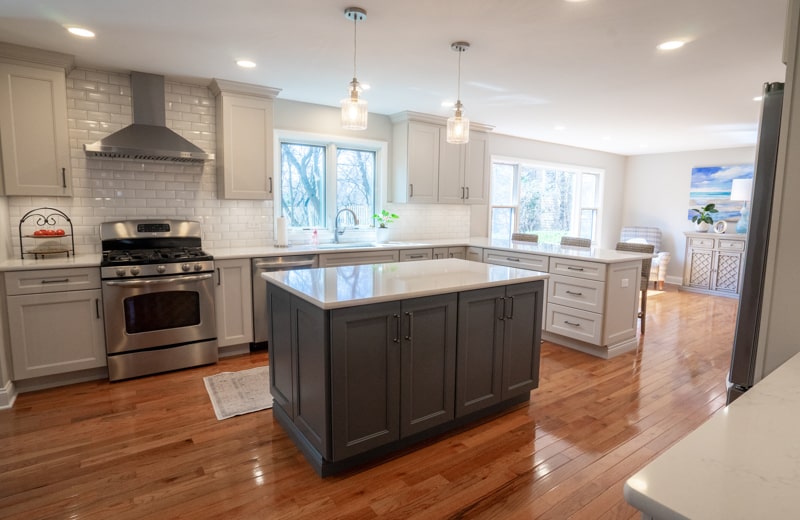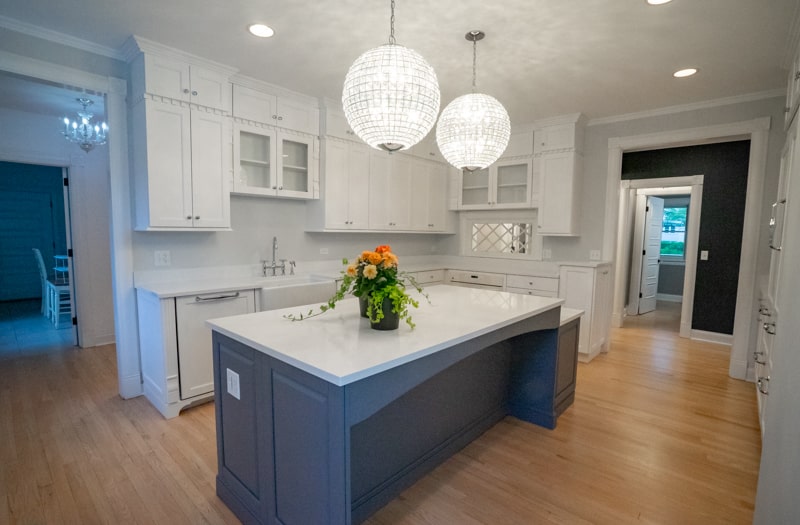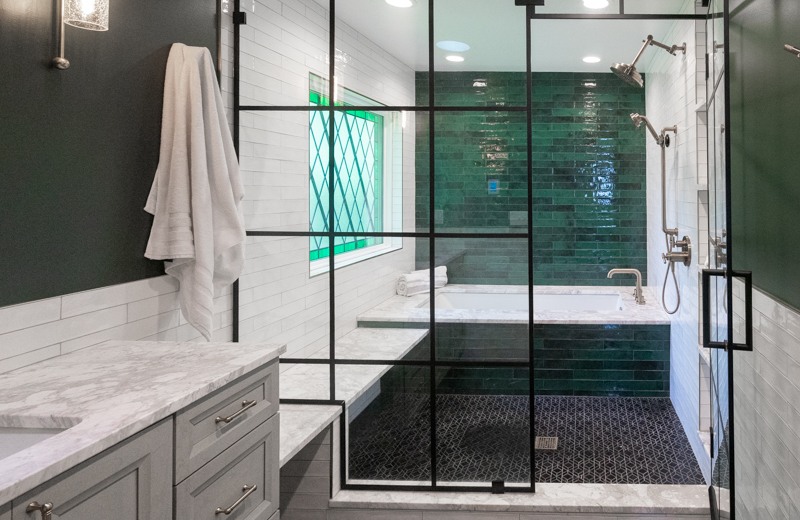What to Expect from the First Phone Call to the Finished Project
Scholl Construction is ready to not only help you build your new dream home, but we’re also here to help you understand what to expect throughout the building process. In this video, Peter Scholl answers some of the most common questions about building a new home. Starting with learning about your project to helping you get blueprints, permits, loans, and more, Scholl has the expertise and experience to help you bring your dream to life.
Let’s learn more about you!
Ready to take the first step? Call us today at 815-479-0910, or contacting us online to arrange an appointment.
Transcript
Jeanne Schroeder
Hi, I’m Jeanie Schroeder. I’m the sales assistant at Scholl Construction.
Peter Scholl
And I’m Peter Scholl, owner of Scholl Construction.
Jeanne Schroeder
We wanted to take a few minutes to introduce Scholl Construction to you and answer some of the most common questions that we receive from our clients. Pete, when someone reaches out to Scholl Construction to build a custom home, they have many similar initial questions. One I hear a lot is, ‘what is the process with Scholl Construction?’ Let’s take our viewers step by step. What is usually the first step?
Peter Scholl
First step would be contacting you as a sales assistant. They’re coming to you telling you about their vision for the project and what they want to accomplish. You’re taking down information about what they want to build, the size, the features that they want to include. If they have land, if they have blueprints, if they have architectural, where they are, what their budget is and the overall goal.
Jeanne Schroeder
Do you offer office visits to discuss their ideas, review any drawings or inspiration designs?
Peter Scholl
I do. After the initial consultation on the phone with you, the next step would usually be to have them come to our office or us go to their home.
Jeanne Schroeder
What happens after the office visit or home visit?
Peter Scholl
After the home visit or the office visit, we take the information we collected at the meeting and we’ll go back to the office and we’ll come up with a ballpark figure to make sure that we’re on the same page.
Jeanne Schroeder
And then you present the ballpark in person? Why is that important to you?
Peter Scholl
We do present the ballpark in person. At this point, we’re typically still in the stage where we’re negotiating between the budget and their desires. We’re still developing the project together.
Jeanne Schroeder
If the ballpark estimate looks good and people are ready to move forward, what’s the next step?
Peter Scholl
After the ballpark estimate, we move on to the design phase. We’ll start working together in a design/build process.
Jeanne Schroeder
The design contract and design fee is next. What does that get the customer for a custom home?
Peter Scholl
The design contract and the design fee gets the customer blueprints, architectural engineering, material selections, permits, and a final estimate.
Jeanne Schroeder
What happens after the contract and fee are agreed upon?
Peter Scholl
Then we move into the construction phase of the project.
Jeanne Schroeder
And when does permitting happen?
Peter Scholl
Permitting happens after the blueprints and engineering are complete; typically, while we’re doing the final estimate, we’ll apply for the permit.
Jeanne Schroeder
What can an owner expect from the final proposal?
Peter Scholl
The final proposal on a new home is typically about 30 pages long. Every detail is broken down as to what you’re getting in your new home based on each trade partner, and any specification or material that you selected is listed there.
Jeanne Schroeder
After a final proposal and contract are signed, what would drive the construction start date?
Peter Scholl
The construction start date is assuming that we have the permits in place. It’s driven by the materials that we ordered. We’ll get all the materials specified and ordered and then we’ll get the lead times for those materials. We schedule backwards so that we can start construction and continue on with the project without interruption.
Jeanne Schroeder
Sounds like you have a good plan in place. Can a customer make changes once the project has begun?
Peter Scholl
Yes, however, the less changes, the better. I think changes are like death and taxes, they’re inevitable, but, the less taxes you can pay and the longer you can push off death the better! The less changes that you have, the smoother your project is going to run. Pre-planning is a very important step.
Jeanne Schroeder
Let’s talk timelines. Can you explain the difference between an overall project timeline and the construction timeline?
Peter Scholl
Overall project timeline includes all the planning phases that we spoke about. The planning phases often take longer than the actual construction. The planning, the initial consultation, taking it from a dream or inspiration, photos to reality, and then getting it all on paper with the architects, the engineers, having designers get their input, selecting all the materials, getting the permits; that’s all pre-construction. The actual construction time frame is when we start the excavation up to when you move in.
Jeanne Schroeder
People looking at existing homes often want to compare the cost per square foot of those to new construction. Why is this a difficult or inaccurate comparison?
Peter Scholl
They do. When you go searching for homes online, it always lists cost per square foot. Anything that you buy used, that wasn’t built for you custom, any product that you can think of is always going to be less than having it built specifically for you… brand new. The other variable that isn’t considered when you’re looking at the cost per square foot, doesn’t include basements, garages, porches, decks. Those things are a big part of the custom projects that we build. They’re not included in square foot cost, but unfortunately they do cost quite a bit to build. In fact, exterior things like screened in porches and front porches cost significantly more than it does to build interior spaces.
Jeanne Schroeder
You’re saying not all square footage is created equal?
Peter Scholl
No, it’s not created equal. I wish there was an easy formula for that.
Jeanne Schroeder
A lot of people hear other builders say they are booked for the year. How does Scholl Construction’s business model accommodate multiple projects and the ability to start new ones when clients are ready?
Peter Scholl
At Scholl Construction, we’re typically running 15 projects at a time. Projects are starting and finishing at different times throughout the year, so we always have room to get your project in and started. I have not been booked for at least 15 years. I’m always looking for new projects and we have multiple crews running at multiple times in different cities.
Jeanne Schroeder
As our sales associate, I’m usually the first point of contact for new clients. What are some of the ways someone can get in touch with us?
Peter Scholl
Many of our past clients are referring us to a new client, which we’re very thankful for. The second way we get referrals is through the internet; people are searching us and contacting us through the website. Other people will drive by, see us and walk in and other people call us on the phone.
Jeanne Schroeder
Why is finding the right fit for a client and builder so important?
Peter Scholl
It’s very important. The most important part of the building process is the relationship. The relationship and the trust that you have between your builder and your client is the basis for what you’re going to build and do here. Everything depends on the trust and relationship.
Jeanne Schroeder
What advice do you give people wanting to build a custom home?
Peter Scholl
I tell them pre-planning is very important. Pick as many things as you can in the beginning, get it all drawn out, preplanned, and then try not to change. It’s going to be a smoother and easier process.
Jeanne Schroeder
Thank you for taking the time to answer my questions today.




